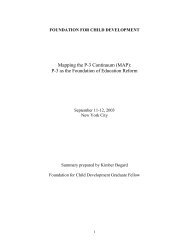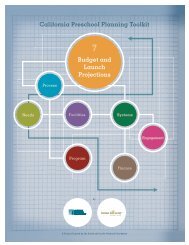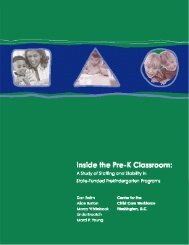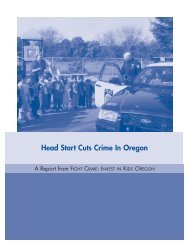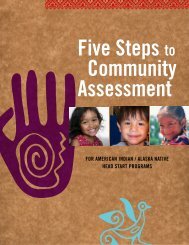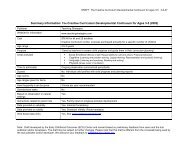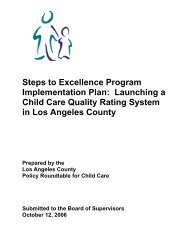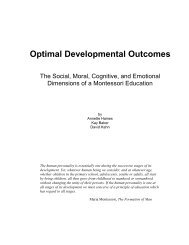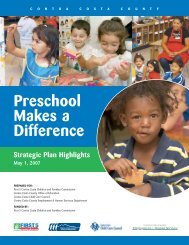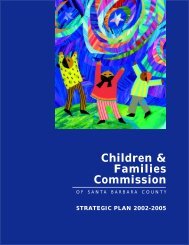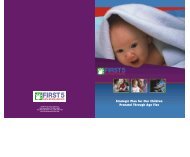Download this file - Plan4Preschool
Download this file - Plan4Preschool
Download this file - Plan4Preschool
Create successful ePaper yourself
Turn your PDF publications into a flip-book with our unique Google optimized e-Paper software.
State Assistance Programs<br />
Immediate Intervention/Underperforming Schools Program<br />
The Public Schools Accountability Act of 1999 established the Immediate Intervention/<br />
Underperforming Schools Program (II/USP) to improve the academic achievement in<br />
California's low-performing schools. The statute (California Education Code Section<br />
52053 et seq.) called for the annual selection of 430 schools in the lower half of all<br />
schools on the Academic Performance Index (API) that failed to meet API growth<br />
targets in the preceding year. Participating schools received $50,000 planning grants<br />
during their first year to develop a school action plan aimed at removing barriers that<br />
affected student achievement. Upon approval of their plans by the State Board of<br />
Education, each school received a grant of $200 per pupil for two consecutive years to<br />
implement the activities prescribed in the plans.<br />
Schools that met their API growth targets during their implementation years exited<br />
II/USP. Schools that failed to make any progress during the two years were subject to<br />
state sanctions in their third year. II/USP schools that made some progress short of<br />
achieving all their targets received a third year of funding. At the end of the third year,<br />
those schools (1) exited the program if all targets were reached; (2) continued under<br />
annual monitoring if some progress short of the target was achieved; or (3) became<br />
subject to state sanctions if no progress was made. No additional funds were provided<br />
to schools after the third year of participation in II/USP.<br />
Three cohorts of 430 schools each were funded, beginning with II/USP Cohort 1 in<br />
1999. A number of these schools also participated in the Comprehensive School<br />
Reform (CSR) program and/or the High Priority Schools Grant Program (HPSGP).<br />
Participation in CSR did not result in an increase of funds or a change in the<br />
accountability process. Participation in HPSGP resulted in an increase of funding by<br />
$200 per enrolled student.<br />
In 2004-05, funding ceased for II/USP implementation for Cohorts 1 and 2 and for 333<br />
Cohort 3 schools that did not simultaneously participate in HPSGP. No funds were<br />
provided for a fourth cohort.<br />
For more information on the II/USP, contact Martin Miller, Program Assistant, High<br />
Priority Schools Office, at (916) 324-3455 or by e-mail at mamiller@cde.ca.gov. More<br />
information is available on the II/USP Web site at http://www.cde.ca.gov/ta/lp/iu.<br />
Comprehensive School Reform<br />
The federal Comprehensive School Reform Demonstration (CSRD) program was<br />
initiated in 1998 to improve the academic performance of low-performing schools by<br />
providing grants to implement research-based, school-site reform activities. In addition<br />
to school grants of $200 per pupil, districts with participating schools also received an<br />
additional ten percent of the total grant to support administrative, evaluation, and<br />
support activities. Because the goals of the CSRD program and Immediate<br />
54



